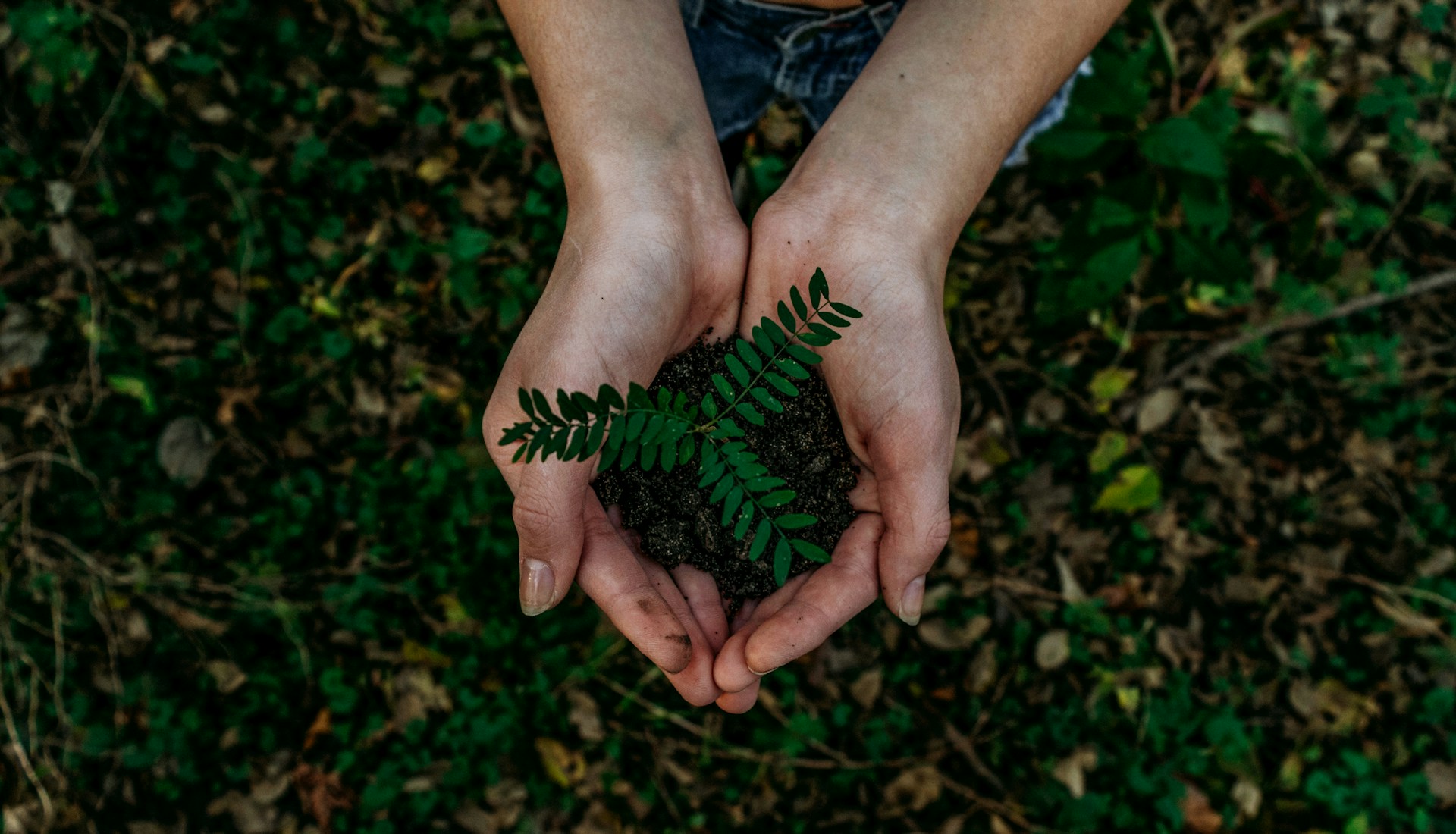The Basics of the Circular Economy
A circular economy is an economic system that aims to minimize waste and extract the maximum value from resources by keeping them in use for as long as possible. Unlike the traditional linear economy, which follows a ‘take-make-dispose’ model, a circular economy promotes practices such as recycling, reusing, and remanufacturing to create a closed-loop system where materials and products are reused continuously.
Central to the concept of a circular economy is the idea of regenerating resources rather than depleting them. By designing products with durability, reparability, and reusability in mind, businesses can prolong the life cycle of their products and reduce the need for extracting new resources. This shift towards a more sustainable and resource-efficient approach has gained traction in recent years as companies and governments recognize the environmental and economic benefits of embracing circular economy principles.
The Concept of Resource Regeneration
Resource regeneration is a core principle of the circular economy, emphasizing the importance of maximizing the utility and value of resources throughout their lifecycle. Instead of following a linear path of extraction, production, consumption, and disposal, the concept of resource regeneration focuses on designing systems that promote reuse, refurbishment, recycling, and recovery. By implementing strategies that prioritize regeneration, businesses and industries can reduce waste generation, conserve natural resources, and minimize environmental impact.
In a regenerative system, resources are viewed as valuable assets that can be continually cycled back into the economy, rather than being treated as disposable commodities with a finite lifespan. This shift in perspective requires rethinking traditional approaches to resource management and embracing innovative solutions that promote sustainability and resilience. Through resource regeneration, companies can not only reduce their ecological footprint but also create new opportunities for economic growth, job creation, and social development.
Key Principles of Circular Economy
The key principles of a circular economy revolve around designing out waste and pollution, keeping products and materials in use, and regenerating natural systems. This approach aims to create a closed-loop system where resources are kept in circulation for as long as possible, rather than being used and then disposed of as waste. By prioritizing the concept of resourcefulness and sustainability, the circular economy emphasizes the importance of rethinking traditional linear models of production and consumption.
Another fundamental principle of the circular economy is the idea of prolonging the lifespan of products through repair, remanufacturing, and recycling. This shift from a disposable mentality to a more long-lasting and circular approach not only reduces the environmental impact of resource extraction and waste generation but also encourages a more sustainable consumption pattern. By focusing on maximizing the value and utility of products and materials throughout their lifecycle, the circular economy aims to create a more resilient and resource-efficient economy for the future.
Benefits of Adopting Circular Economy Practices
Adopting circular economy practices can lead to increased resource efficiency and reduced waste generation. By designing products with durability and recyclability in mind, businesses can minimize the extraction of raw materials and the amount of waste sent to landfills. This shift towards a more sustainable approach not only benefits the environment but also helps companies save costs in the long run.
Furthermore, transitioning to a circular economy can stimulate innovation and create new business opportunities. Companies that embrace circular practices often find ways to repurpose and reuse materials, leading to the development of innovative products and services. By fostering a closed-loop system where resources are conserved and continuously circulated, businesses can tap into a more resilient and dynamic economy.
• Adopting circular economy practices can lead to increased resource efficiency and reduced waste generation.
• Designing products with durability and recyclability in mind minimizes the extraction of raw materials and reduces landfill waste.
• Transitioning to a circular economy stimulates innovation and creates new business opportunities.
• Embracing circular practices leads to the development of innovative products and services through repurposing materials.
• A closed-loop system fosters resource conservation, creating a more resilient and dynamic economy.
Challenges in Transitioning to a Circular Economy
Transitioning to a circular economy poses several challenges that need to be addressed for successful implementation. One key obstacle is the shift in mindset required from the traditional linear economy model to one centered around resource regeneration and sustainability. This change necessitates a reevaluation of production processes, consumption patterns, and waste management practices, which may be met with resistance from established industries and consumers accustomed to a linear approach.
Additionally, the lack of standardized frameworks and policies supporting the circular economy can impede its widespread adoption. Without clear guidelines and incentives in place, businesses may struggle to navigate the complexities of transitioning to circular business models. Furthermore, the investment required to implement circular economy practices, such as upgrading infrastructure and retraining employees, can be a significant barrier for organizations looking to make the shift. Addressing these challenges will be essential in overcoming the obstacles to successfully transitioning to a circular economy.
Circular Economy vs. Traditional Linear Economy
The traditional linear economy follows a ‘take-make-dispose’ approach, where resources are extracted, used to manufacture products, and then discarded as waste after their intended use. This linear model leads to the depletion of finite resources, increased waste generation, and greenhouse gas emissions contributing to environmental degradation. In contrast, the circular economy aims to keep resources in use for as long as possible through strategies such as recycling, reusing, and remanufacturing, thereby minimizing the overall environmental impact of economic activities.
In a circular economy, the goal is to create a closed-loop system where products, materials, and resources are kept in circulation to maintain their value and reduce the need for continual extraction of virgin resources. By shifting away from the linear ‘take-make-dispose’ model towards a more circular approach, businesses and society can move towards a more sustainable and resilient economic system that is better equipped to address environmental challenges and promote long-term prosperity.
Circular Economy Business Models
In the context of the circular economy, businesses are increasingly exploring innovative models that prioritize sustainable practices and resource efficiency. One prominent business model that exemplifies this approach is the product-as-a-service model, where companies offer products to customers on a lease or rental basis rather than selling them outright. This not only extends the product’s lifespan but also allows for easier maintenance, repair, and eventual recycling.
Another emerging business model in the circular economy is the sharing economy model, where multiple users have access to a product or service through sharing platforms. By maximizing the utilization of resources and reducing individual ownership, this model promotes a more sustainable use of goods and services. Additionally, businesses are also embracing the idea of remanufacturing, where used products are disassembled, repaired, and upgraded to be as good as new, thus reducing waste and conserving resources.
Examples of Circular Economy Initiatives
Circular economy initiatives are gaining momentum across various industries as businesses strive to reduce their environmental impact and create a more sustainable future. One notable example is the clothing brand Patagonia, which has implemented a Worn Wear program that promotes the repair and resale of their products to extend their lifespan. By encouraging customers to repair and reuse their clothing, Patagonia is promoting a more circular approach to consumption.
Another noteworthy example of a circular economy initiative is the collaboration between Philips and the Dutch government to recycle old household appliances. Through their joint effort, they have developed a system that allows consumers to return their old appliances for recycling, with the materials being used to manufacture new products. This closed-loop system not only reduces waste but also conserves resources by reintroducing them back into the production cycle.
The Role of Innovation in a Circular Economy
In a circular economy, innovation plays a crucial role in driving the transition towards more sustainable and efficient use of resources. By fostering creativity and out-of-the-box thinking, innovation leads to the development of new technologies, processes, and business models that minimize waste, enhance resource productivity, and promote the reuse and recycling of materials. These innovative solutions not only help businesses operate in a more environmentally friendly manner but also open up new opportunities for economic growth and competitiveness.
Moreover, in a circular economy, innovation is instrumental in overcoming the challenges associated with transitioning from a linear to a circular model. It enables the identification of gaps in the current system and the creation of solutions that address these gaps effectively. By continuously pushing the boundaries of what is possible and exploring alternative approaches to production and consumption, innovation drives progress towards a more sustainable future where resource use is optimized, waste is minimized, and environmental impact is reduced.
Circular Economy in Different Industries
In the fashion industry, the adoption of circular economy principles is gaining momentum as companies seek to minimize waste and reduce environmental impact. By embracing practices such as designing for longevity, promoting clothing rental and resale, and utilizing recycled materials, fashion brands are reshaping their production processes to align with sustainability goals. Initiatives like closed-loop manufacturing and take-back programs are not only driving resource efficiency but also appealing to environmentally-conscious consumers.
The automotive sector is also undergoing a transformation towards a circular economy approach. By implementing remanufacturing techniques, improving product durability, and enhancing recycling processes, car manufacturers are striving to extend the lifespan of vehicles and components. Embracing a circular economy mindset allows the industry to recover valuable materials, reduce energy consumption, and mitigate the ecological footprint associated with automotive production and disposal. As sustainability becomes a key driver of consumer preferences, automakers are increasingly integrating circular economy practices to enhance their competitiveness and environmental stewardship.
Circular Economy and Sustainable Development Goals
The concept of sustainable development goals is focused on addressing global challenges such as poverty, inequality, and climate change. These goals aim to promote economic growth, social inclusion, and environmental protection in a holistic and integrated manner. By incorporating the principles of the circular economy into sustainable development efforts, it is possible to create a more regenerative and resource-efficient society that operates within planetary boundaries.
Through the adoption of circular economy practices, countries can work towards achieving the Sustainable Development Goals set by the United Nations. This includes promoting responsible consumption and production, ensuring sustainable use of resources, and fostering innovation in design and production processes. By aligning circular economy strategies with sustainable development goals, policymakers and businesses can drive positive economic, social, and environmental impacts for present and future generations.
Circular Economy and Climate Change Mitigation
Climate change is a global challenge that requires urgent action to mitigate its impacts. The circular economy presents an opportunity to address climate change by reducing greenhouse gas emissions, promoting resource efficiency, and minimizing waste generation. By transitioning to a circular economy model, businesses and industries can play a significant role in lowering their carbon footprint and contributing to overall climate change mitigation efforts.
Furthermore, the circular economy champions the idea of extending product lifecycles, reusing materials, and recycling resources in a closed-loop system. These practices help reduce the extraction of raw materials, energy consumption, and pollution associated with traditional linear production and consumption patterns. By embracing circular economy principles, societies can move towards a more sustainable and resilient future, aligning with the goals of global climate change mitigation strategies.
Circular Economy and Waste Management
Waste management is a crucial aspect of the circular economy framework. In a circular economy, waste is seen as a valuable resource that can be reused, recycled, or repurposed in various ways to minimize the generation of new waste. Through efficient waste management practices, such as recycling and composting, the circular economy aims to create a closed-loop system where materials are continuously cycled back into the production process.
By implementing innovative waste management strategies, businesses and communities can reduce the environmental impact of waste generation and disposal. Adopting circular economy principles in waste management can lead to significant reductions in the consumption of raw materials, energy usage, and greenhouse gas emissions. Through effective waste management practices, the circular economy not only minimizes waste sent to landfills but also creates economic opportunities through the development of new markets for recycled materials and products.
Circular Economy and Product Design
When it comes to product design in the context of the circular economy, the focus shifts towards creating products that are durable, repairable, and ultimately recyclable or compostable at the end of their life cycle. Designing products with the intention of extending their lifespan and facilitating ease of repair and disassembly is crucial in the shift towards a more sustainable and circular approach.
Furthermore, incorporating recyclable materials into the design process and optimizing manufacturing techniques to reduce waste generation play a significant role in promoting circularity in product design. By embracing design strategies that prioritize the use of renewable resources and minimize environmental impact throughout the product life cycle, companies can contribute to creating a more sustainable and resource-efficient economy.
Circular Economy and Consumer Behavior
Consumer behavior plays a crucial role in the successful implementation of circular economy practices. Consumers have the power to drive demand for sustainable products and services, influencing businesses to adopt more environmentally friendly practices. By making conscious choices to support companies that prioritize resource efficiency, recycling, and waste reduction, consumers can contribute significantly to the circular economy transition.
Additionally, consumer education and awareness are key factors in promoting a circular mindset. Encouraging consumers to rethink their purchasing habits, extend the lifespan of products, and participate in recycling programs can help create a culture of sustainability. As individuals become more informed about the environmental impact of their consumption patterns, they are more likely to align their behavior with the principles of the circular economy, leading to a more sustainable and resource-efficient society.
Circular Economy and Supply Chain Management
Implementing circular economy practices within supply chain management is becoming increasingly important for businesses striving to reduce waste and enhance sustainability. By redesigning supply chains to prioritize resource efficiency and closed-loop systems, companies can minimize their environmental impact while also improving operational efficiency. This involves rethinking traditional supply chain models and incorporating strategies such as product life extension, remanufacturing, and recycling to create a more circular flow of materials and resources.
Furthermore, integrating circular economy principles into supply chain management can result in cost savings and enhanced resilience to supply chain disruptions. Adopting a circular approach can help companies optimize resource utilization, reduce dependency on raw materials, and foster innovation in product design and manufacturing processes. By considering the entire lifecycle of products and materials within the supply chain, organizations can create more sustainable and regenerative systems that benefit both the environment and the bottom line.
Circular Economy and Policy Making
Policy making plays a crucial role in advancing the principles of a circular economy. A supportive policy framework can incentivize businesses to adopt sustainable practices, promote resource efficiency, and reduce waste generation. By implementing regulations that favor circular business models and innovation, policymakers can drive the transition towards a more sustainable economic system.
Moreover, effective policies can create a level playing field for companies striving to adopt circular economy practices. Through measures such as extended producer responsibility schemes, eco-design standards, and waste reduction targets, policymakers can encourage the shift towards a closed-loop system where resources are kept in use for as long as possible. Strategic policy interventions can not only enhance resource productivity and curb environmental degradation but also stimulate economic growth and job creation in sectors that prioritize sustainability.
Circular Economy and Circular Cities
Circular cities are urban environments designed to minimize waste, promote recycling, and encourage sustainable practices within their infrastructure. These cities prioritize efficient use of resources, reducing emissions, and promoting a circular economy mindset among residents and businesses. By incorporating principles of circular economy into city planning and development, circular cities aim to create a more sustainable and environmentally friendly urban living environment.
Key features of circular cities include integrated waste management systems, renewable energy sources, green spaces, and efficient public transportation networks. These cities focus on creating closed-loop systems where resources are reused, recycled, and regenerated to minimize environmental impact and enhance resource efficiency. With an increasing global focus on sustainability and climate change, circular cities are emerging as innovative models for urban development that prioritize environmental stewardship and long-term viability.
Circular Economy and Circular Design Principles
Circular design principles are at the core of the circular economy framework, aiming to maximize resource efficiency and minimize waste throughout the product lifecycle. Designing products with durability, repairability, and recyclability in mind contributes to creating a closed-loop system where materials can be reused and regenerated endlessly. This shift towards circular design not only reduces the environmental impact of products but also fosters a more sustainable approach to consumption and production.
Embracing circular design principles requires a shift in mindset for designers and manufacturers to prioritize long-term sustainability over short-term profit. By considering the entire lifecycle of a product from inception to disposal, designers can optimize materials, energy usage, and waste management practices to create products that are not only eco-friendly but also economically viable in the long run. Integrating circular design principles into product development processes is a crucial step towards building a more sustainable and regenerative economy.
The Future of the Circular Economy Movement.
As we look ahead to the future of the circular economy movement, it is evident that businesses and governments alike are increasingly recognizing the importance of transitioning towards more sustainable and regenerative practices. This shift towards circularity is not just a trend, but a necessary response to the environmental challenges we face today. Companies are starting to realize the value in rethinking their traditional linear business models and are exploring innovative ways to reduce waste, promote resource efficiency, and foster a more closed-loop system.
Moreover, the growing awareness among consumers about the environmental impact of their purchasing decisions is driving demand for products and services that align with circular economy principles. This shift in consumer behavior is likely to further incentivize businesses to embrace circularity as a means to not only meet consumer expectations but also to distinguish themselves in an increasingly competitive market. In the future, we can expect to see a greater emphasis on collaboration across industries, policy innovation to support circular practices, and the continued development of new technologies to facilitate the transition towards a more sustainable and circular economy.




